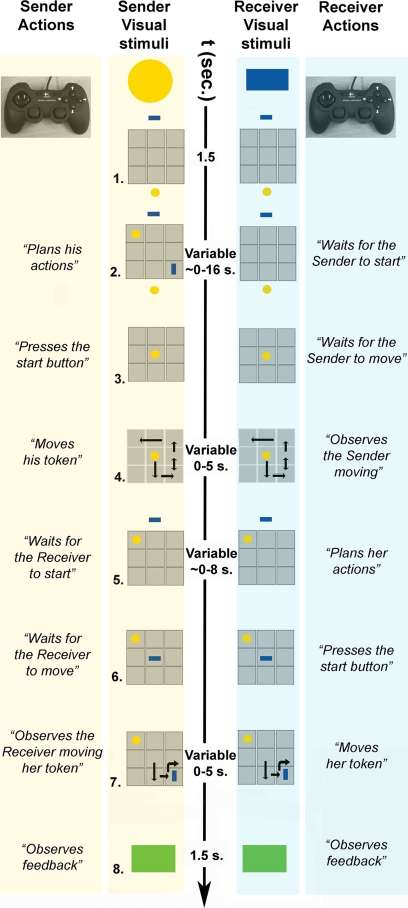Figure 1.
- Sender and receiver see a 3 × 3 game board (in grey) on separate screens, with their own tokens (yellow, blue) positioned below and above the board, respectively.
- The goal configuration appears on the board. During communicative trials, the sender, but not the receiver, can see the goal configuration to be achieved at the end of the trial. The sender needs to share this information with the receiver, and he can do so only by moving his token over the board.
- When ready to move, the sender presses a start button and his token moves to the centre of the board, being visible to both players.
- Within 5 s, the sender needs to move his token on the board (with the controller shown) to inform the receiver about her goal position and to reach his own goal position. The sender's token was visible to both players. The double arrow indicates repeated (vertical) movements of the sender's token.
- The receiver can plan her movements while the sender's token remains visible to both players.
- When ready to move, the receiver presses a start button and her token moves to the centre of the board, being visible to both players.
- Within 5 s, the receiver needs to move her token on the board (with the controller shown). The receiver's token was visible to both players. The curved arrow indicates a 90° rotation of the receiver's token.
- A green (correct) or red (incorrect) box appears indicating if both players successfully matched the goal configuration.

